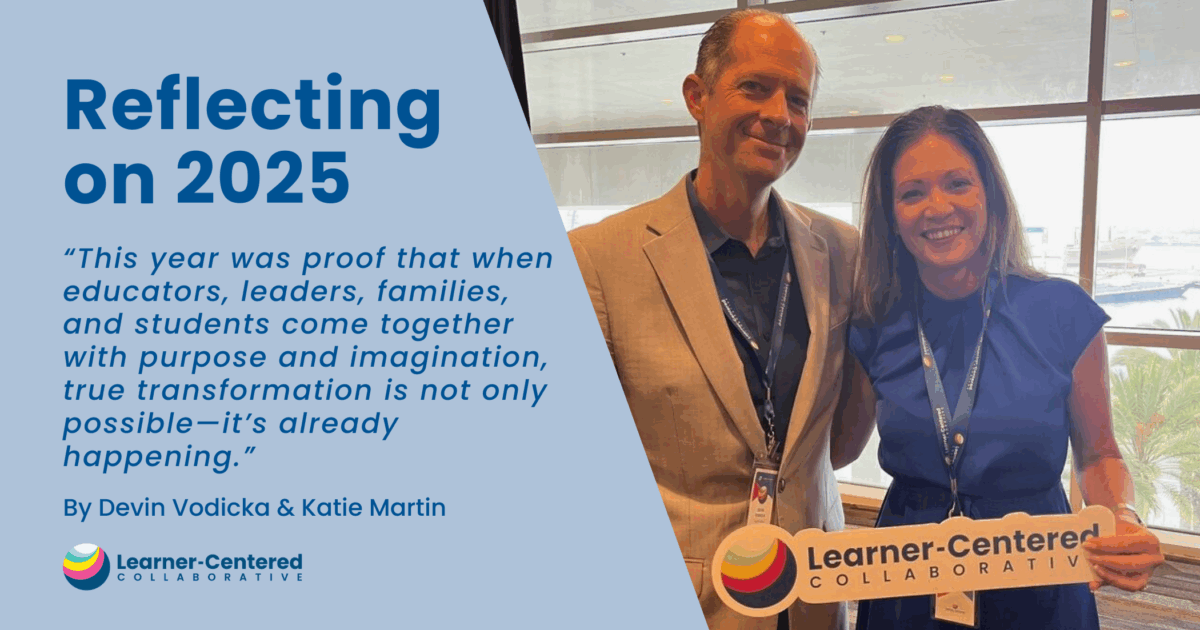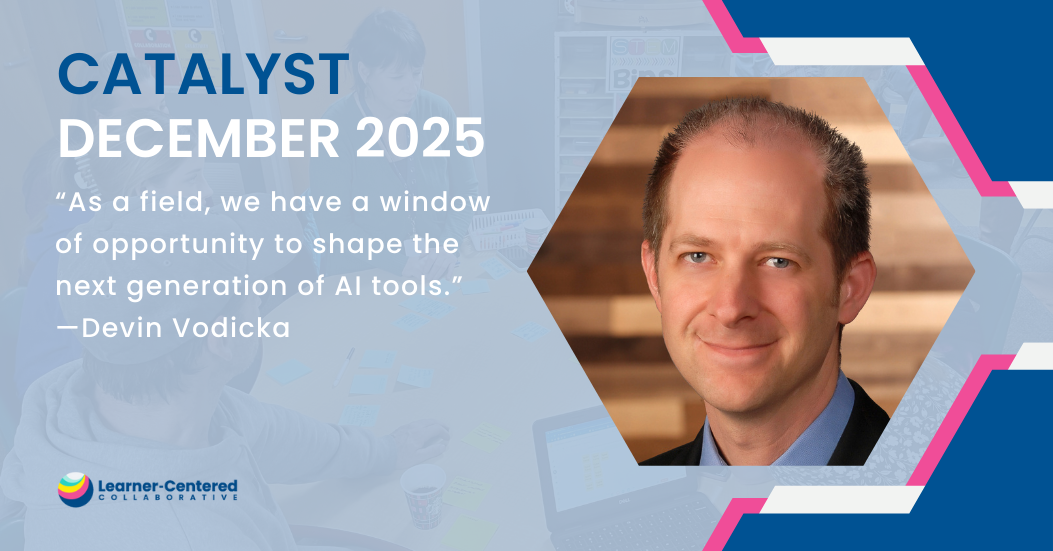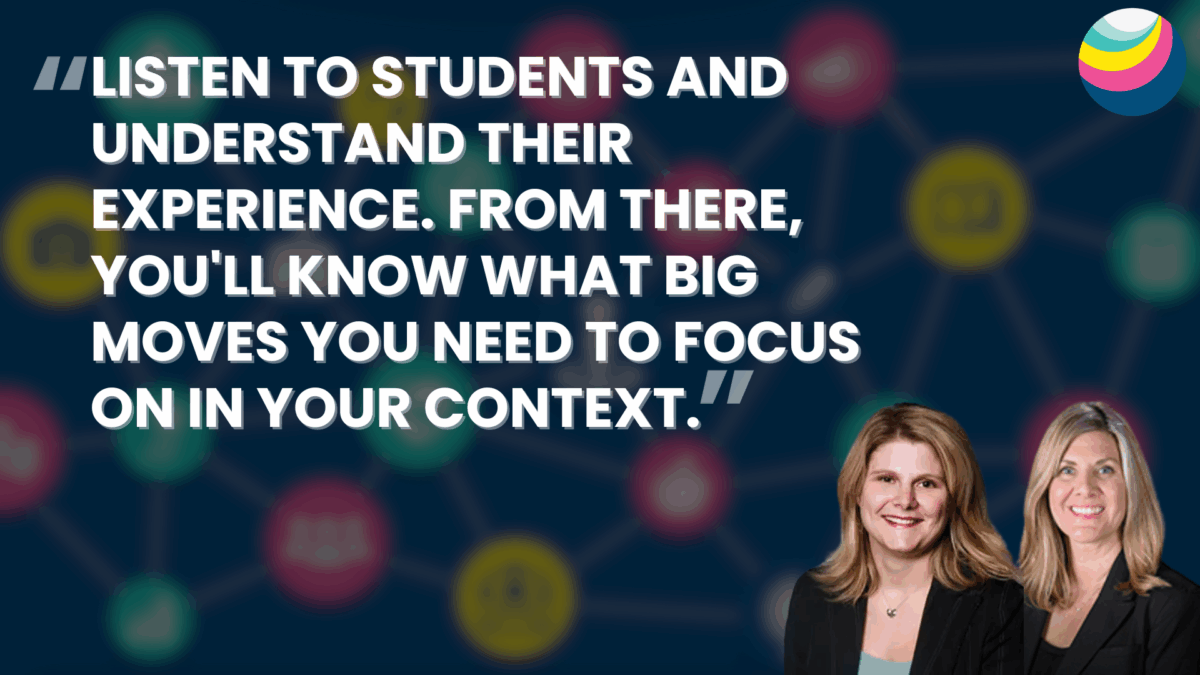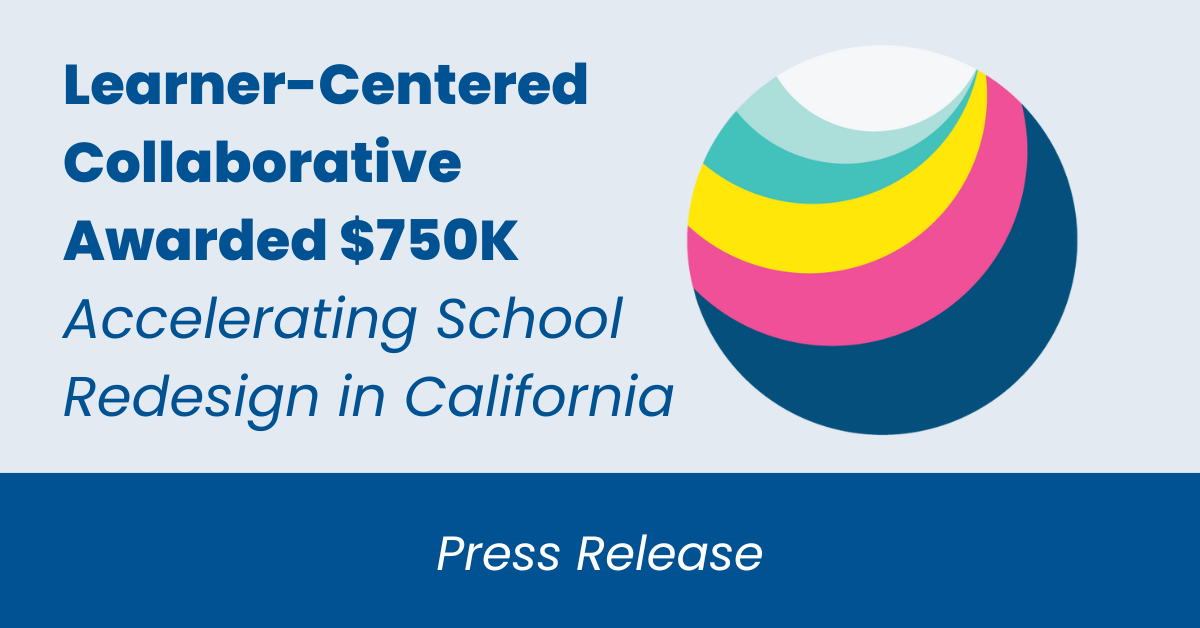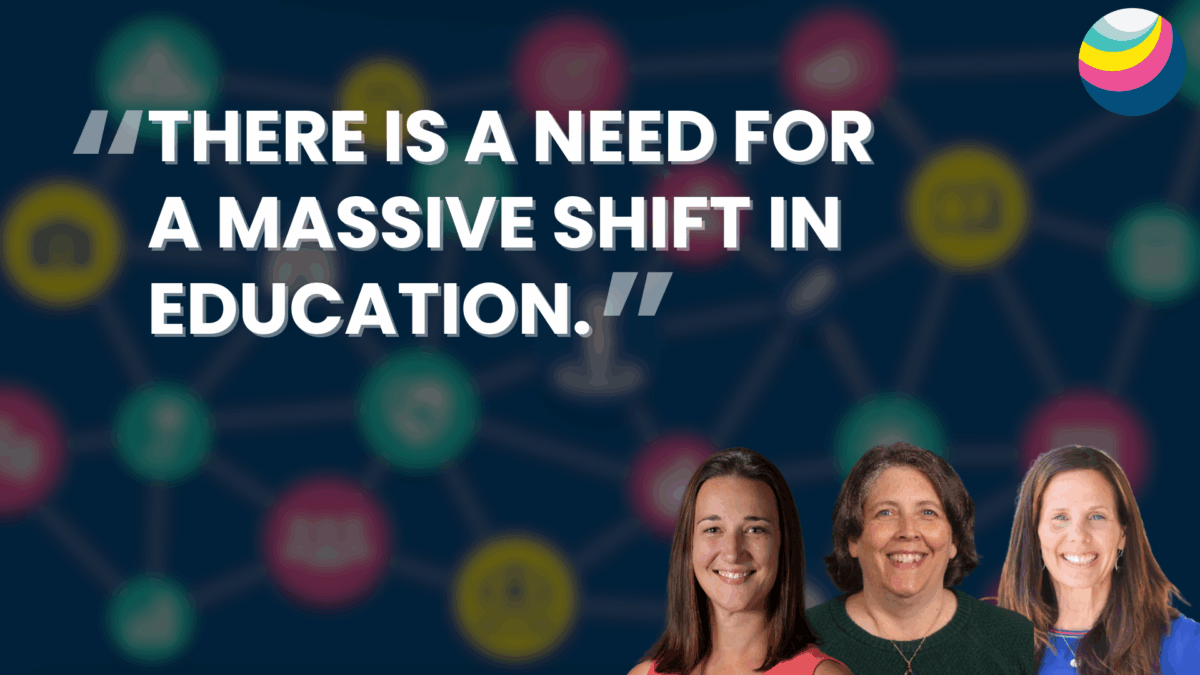Getting from School-Centered to Learner-Centered
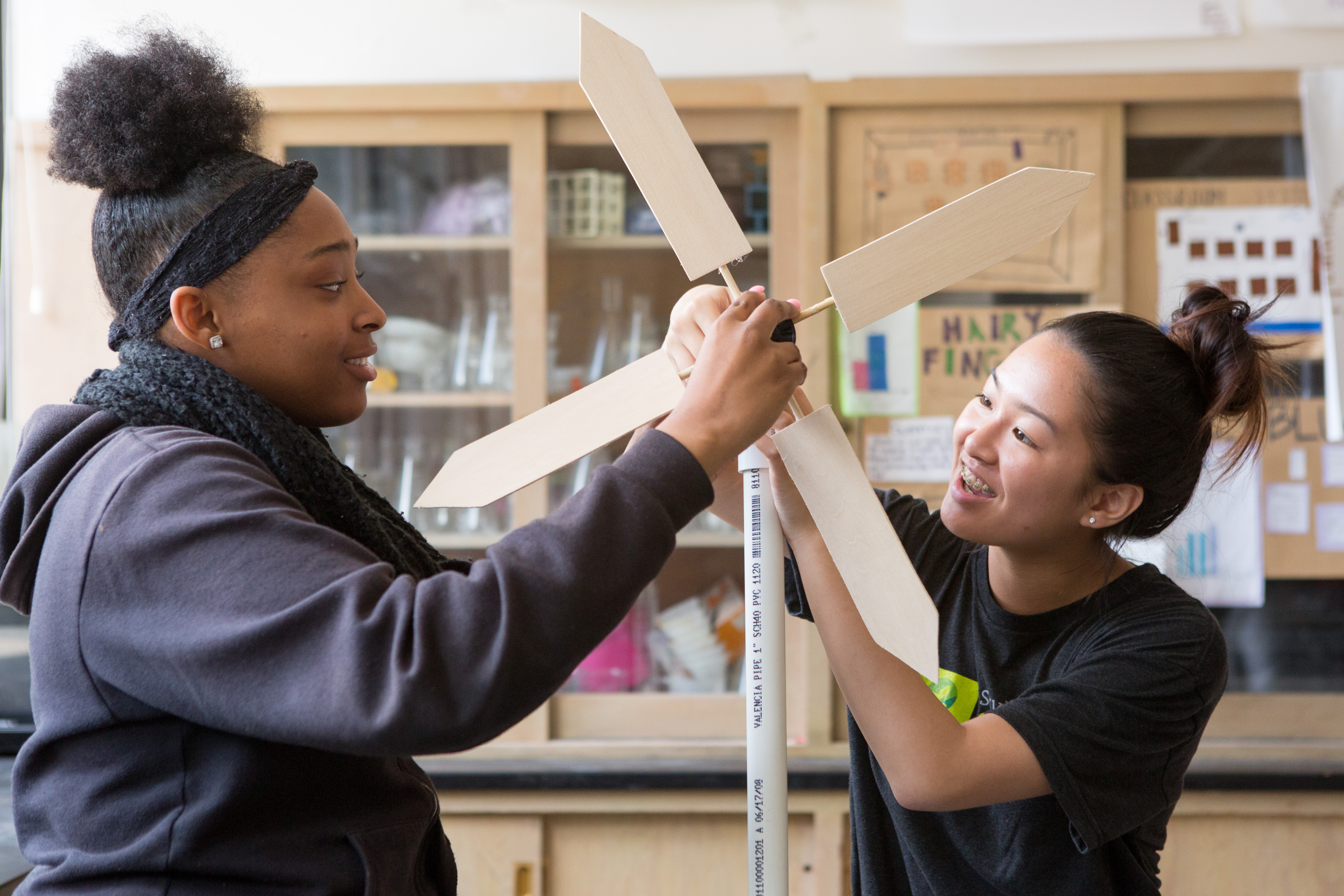
Some say “schools are broken.” We say schools are doing exactly what they were designed to do 150 years ago–but the needs have drastically changed and it is time to build newer and better systems that support every learner to achieve their goals and engage in the world as their best selves. That’s where learner-centered education comes in.
What it means to be school-centered vs student-centered vs learner-centered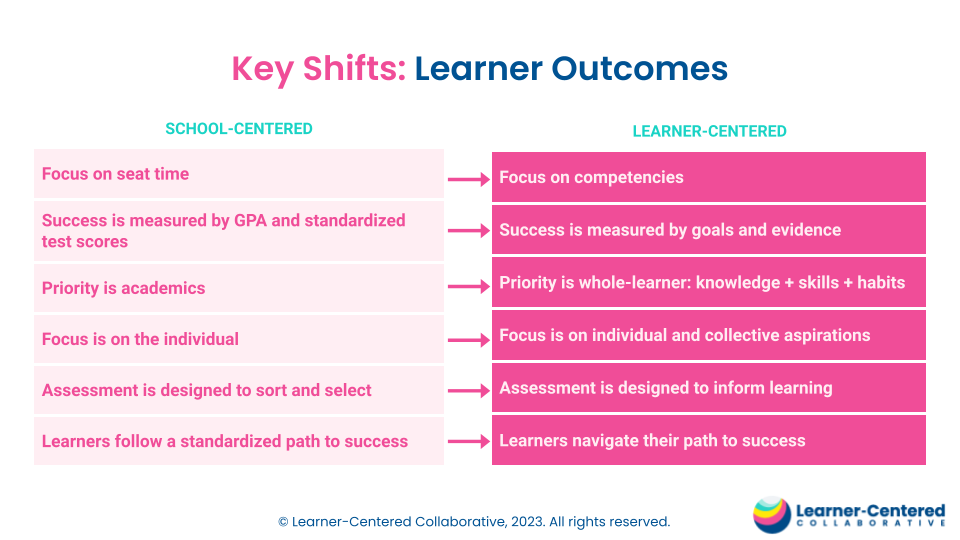
School-centered education
The prevailing model of school was designed to support the industrial era with a focus on efficiency, standardization, compliance, ranking and sorting, and task completion. And the system has done what it was designed to do for over a century. It prioritized operational and logistical efficiency through teacher-directed learning in classrooms, fixed course offerings, set curriculum, predetermined schedules, and seat time as the ticket to the next grade. The era for this model has, however, passed and modern society calls for a broader more individualized set of skills and mindsets.
Student-centered education
A student centered-model moves in the right direction as it tends to consider students and their goals, individual needs, interests, and cultural backgrounds. It can also encompass proficiency-based systems that indicate when students are ready for advancement and may even begin to incorporate learning beyond traditional school and classroom settings. However, it does not necessarily encompass a paradigm shift to propel us beyond the industrial model of education. A student-centered model is most often still situated in a school-centered paradigm that is focused on receiving and transmitting information as opposed to an orientation to learning for students and educators alike.
Learner-centered education
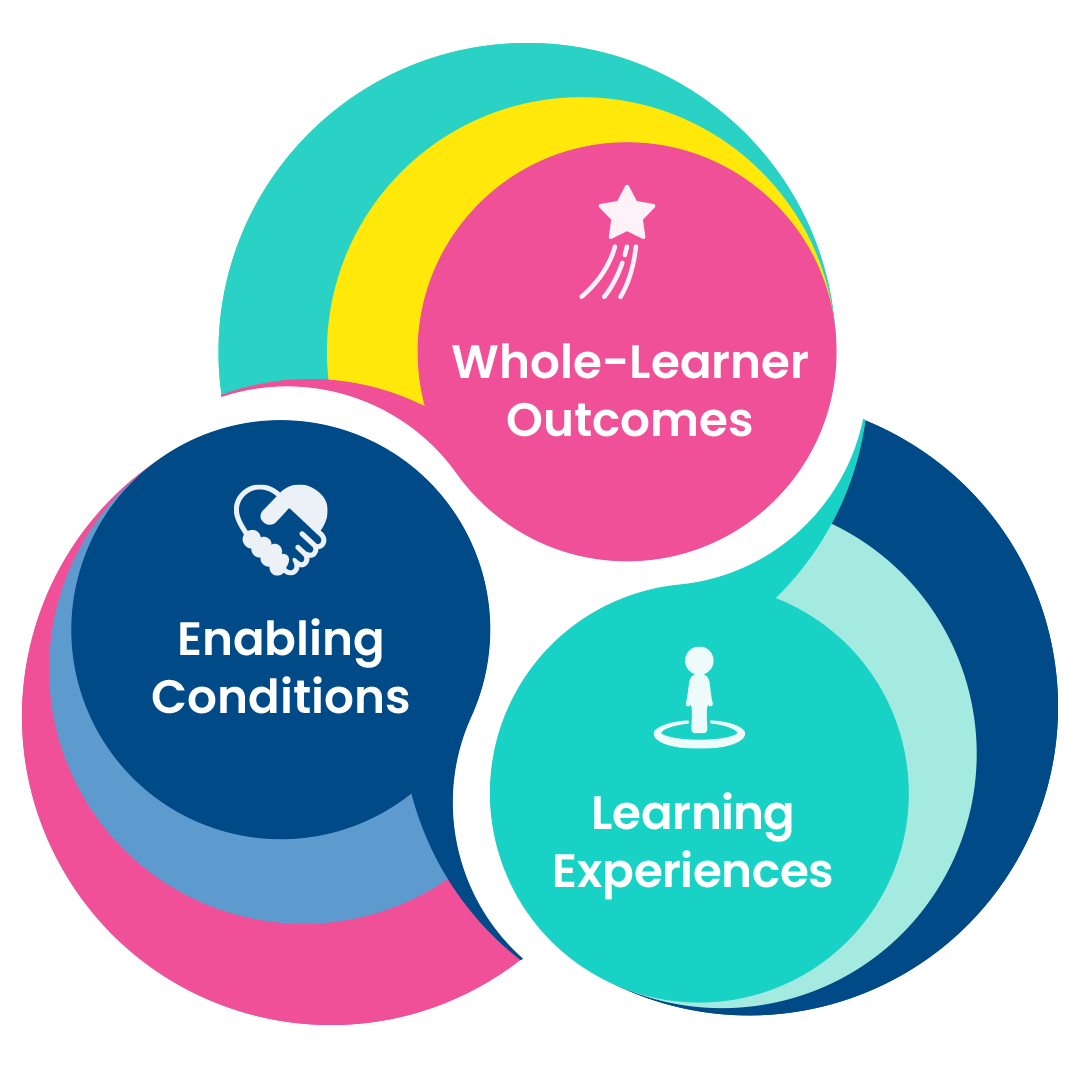 A learner-centered paradigm is a new and different model that takes into account whole-learner outcomes—collaboration, agency, problem-solving—and individual interests, strengths, needs, skills, habits, knowledge, and goals. The systems and learner experiences are then designed in service of this whole-learner approach that aligns to the needs of our modern world. We need young people to be prepared to embrace challenges, navigate complex situations, leverage technology to solve problems, create efficiencies, and learn how to learn as the world and workplace evolve.
A learner-centered paradigm is a new and different model that takes into account whole-learner outcomes—collaboration, agency, problem-solving—and individual interests, strengths, needs, skills, habits, knowledge, and goals. The systems and learner experiences are then designed in service of this whole-learner approach that aligns to the needs of our modern world. We need young people to be prepared to embrace challenges, navigate complex situations, leverage technology to solve problems, create efficiencies, and learn how to learn as the world and workplace evolve.
Another important distinction is that in a learner-centered paradigm we recognize that “learner” includes the adult learners in our schools who are a critical component of bringing a learner-centered paradigm to life. This can and should go beyond certificated staff to include custodial team members, co-teachers, lunch teams, bus drivers, and anyone who is a learner and contributor to the school culture.
Many of the same whole-learner outcomes described above are motivating to all learners: agency, collaboration, problem-solving, and authentic application. If we want to see the learning experience meaningfully change for students we also need to think about the entire school/district community as learners and how we create the same set of environments and enabling conditions for adult learners that we want for young learners.
Getting from School- to Learner-Centered
A paradigm shift starts with a mindset shift—in this case rethinking the purpose of educational systems away from instructional efficiencies toward bringing out the best of each and every learner.
At Learner-Centered Collaborative we have supported over 150 schools and districts to shift to more learner-centered models. While every learning community’s learner-centered journey is unique, they all start with 1) a desire to change and 2) some consensus around what they value most for learners.
When we ask people what they want for their learners, whether it’s learners themselves, parents, admins, teachers, community members, business partners, extended family or beyond we hear things like: communication, collaboration, joy, well-being, contributing citizens. If this is what we want, we need to hold these as our anchors, our north stars, and not get fixated on the schedules and routines that we’ve had for the last 50 years. When we orient to these types of whole-learner outcomes we ultimately can achieve them, but it does require shifting the learning experience and shifting systems and structures.
Fortunately these shifts can happen over time and in tandem, too.
1. Whole-Learner Outcomes: When we work with partner districts we often start with a diverse and representative Guiding Coalition that leads development of a Framework for the Future and Blueprint to set the vision and plan that anchors and guides the journey.
Let’s get explicit about whole learner-outcomes will jumpstart your thinking around what outcomes you really want for learners.
2. Learning Experiences: With a clear and aligned vision and path the focus shifts to implementation. A key component of bringing a learner-centered vision to life is designing the desired learning experiences for learners. At Learner-Centered Collaborative we consider an experience learner-centered if it is personalized, competency-based, authentic, and inclusive & equitable. This is the lens through which we build our self-paced courses and it guides the professional learning experiences we design in service of our partners.
Browse our self-paced courses starting at $50.
3. Enabling Conditions: While we are designing learning experiences we can also be creating the enabling conditions needed for learner-centered education. These attend to coherence, culture, and connectedness which are all important conditions to be able to create the learning experiences that achieve our desired whole-learner outcomes. These range to more tactical elements such as schedules, technology in support of our desired practices, and policies, to interpersonal elements such as relational trust, how we solicit input, and how we engage our communities.
Did you know we offer a course on Establishing the Enabling Conditions for Learner-Centered transformation?
Yes, you can shift to a learner-centered model
True, there are new and different school models being built from scratch, designed to be learner-centered from the ground up with the space, building, staff, culture all being intentionally designed to serve a fresh and modern vision. These “lighthouse” schools are wonderful examples of what’s possible, but learner-centered doesn’t HAVE to come about that way.
Schools that exist in current systems can and are getting to learner-centered paradigms. At Learner-Centered Collaborative we feel very strongly about not leaving existing schools and their learners behind. We can and do support existing schools shifting to learner-centered and it’s incumbent upon all of us to think about how we support existing systems to serve today and tomorrow’s learners.
The good news: Humans designed our current system and we can redesign them too. There is nothing in the way of doing this again and it starts with being clear as a community and culture about what we want our educational outcomes to be and articulating the vision and designing the plans and enabling conditions to get there.
Ready to start shifting your learning community to a more learner-centered paradigm? Let’s chat. Schedule a time.
